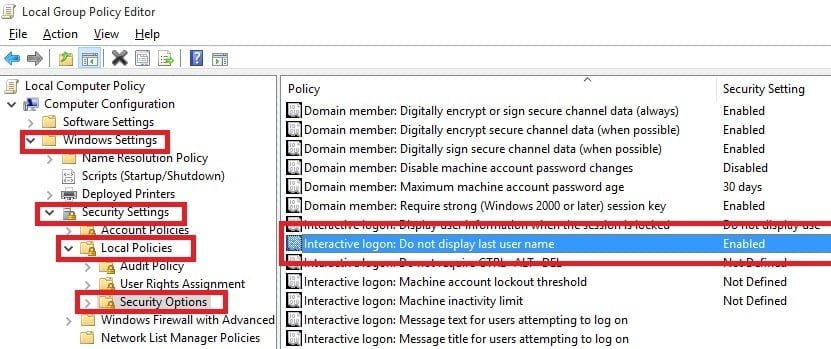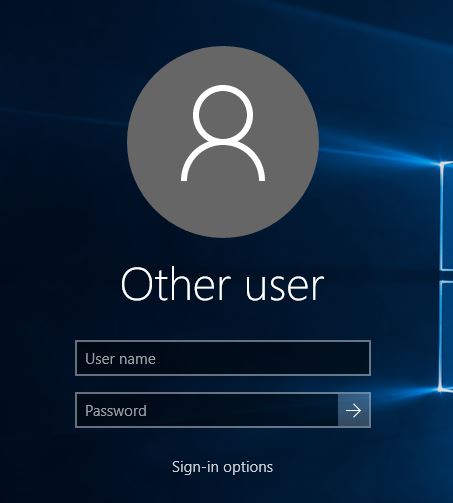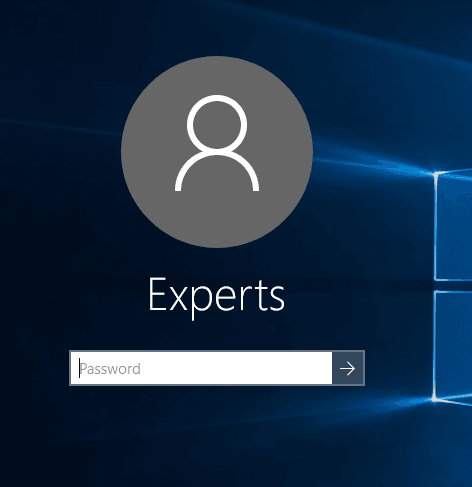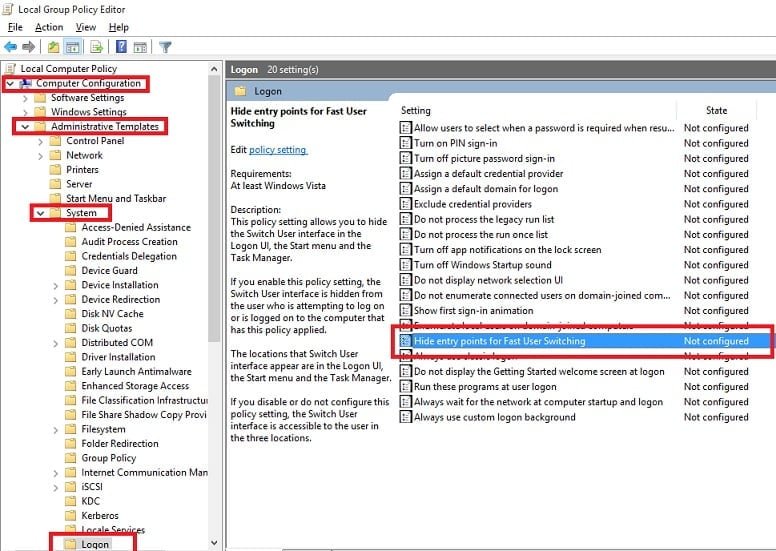If you have remembered or known, not showing last logged in user name or name of logged in person feature has been there since Windows 7 or even from Windows XP. This is a security measure, taken by many users or companies for not showing their names on public or office computers or there could be any privacy reason behind it. Although Windows 10 or even since Windows 7, has given many ways to protect user privacy, but many of such features are hidden or not known to users even if they keeping digging settings of Windows occasionally. So, if you’re looking out for reason and solution, why Windows 10 or Windows 8 don’t show last logged-on user in unlock screen, here’s you need to follow:
Windows 10 Don’t Show Last Logged-On User name in Unlock Screen
Above said scenario occurs, usually by enabling this setting i.e. Interactive logon: Do not display user name which is “Not defined” by default in both Windows 10 and Windows 8. And it’s being imposed majorly in companies where they require an user to logon every time with their user name and password. This setting is enabled via Local Group policy editor, which cannot be overridden if you don’t have administrator access of your computer. However you can still give it a try as policies can vary from place to place. So, if you want, your username or any username to be shown on unlock screen of Windows 10 or Windows 8, here’s what you need to do:
- Open Start menu and type “cmd“, right click on “command prompt” result and choose “Run as administrator“.
- Type “gpedit.msc” and enter. This shall open “Local Group Policy Editor” for you.
- You can open “Local Group Policy Editor” via “Run” dialog box too (by typing “gpedit.msc” into it and enter), but i recommended above method via Command Prompt because i want to make sure that you may get administrator access for making changes in “Local Group Policy Editor” security settings.
- Now navigate to following path in “Local Group Policy Editor“:
|
1 |
\Computer Configuration\Windows Settings\Security Settings\Local Policies\Security Options |
- Find setting of “Interactive logon: Do not display user name” and double click on it.
- Enable that setting, Apply and OK.
- Lock your computer by pressing Windows key + ‘L’. Now you’ll see for unlocking computer, you’re required to enter user name and password both. Two scenarios are possible upon enabling said setting:
- The name of the last user account that was logged on to the local computer is not displayed on the logon screen.
- The name of user account that locked its user logon session is not displayed on the unlock screen.
- If you disable “Interactive logon: Do not display user name” setting, you’ll be back to normal unlock screen, asking only for password with last logged on username.
- Similar scenario you’ll see in Windows 8 too.
In Windows 10, when above said settings is enabled, you’ll not see any back button or arrow which lists the users accounts of locked logon sessions. When setting is disabled, you’ll get back arrow too along with locked logon sessions in that computer.
Also on Trouble Fixers
Upon enabling that settings in Windows 8, you’ll find similar screen in unlock screen of windows:
Avoiding People to Use Their Login During a Locked Session
Also, in Windows 10 or Windows 8, if you’re an IT administrator in a company, and you want to enforce that other users must not be able to login when already a session is locked in that computer. So, there’s a workaround for that. You can force the name of last-logged on user to appear on the unlock screen by enabling another Group Policy Setting that conflicts with above said security setting i.e. Interactive logon: Do not display last user name.
For enabling such scenario, you need to enable another security setting i.e. Hide entry points for fast user Switching. Navigate to following path in Local Group Policy Editor itself:
|
1 |
\Computer Configuration\Administrative Templates\System\Logon\ |
- Now Enable Hide entry points for fast user Switching setting by double clicking on it and choosing Enabled. Apply and OK.
Hide entry points for fast user Switching policy setting allows you to hide the Switch User interface in the Logon UI, the Start menu and the Task Manager.
If you enable this policy setting, the Switch User interface is hidden from the user who is attempting to log on or is logged on to the computer that has this policy applied.
The locations that Switch User interface appear are in the Logon UI, the Start menu and the Task Manager.
If you disable or do not configure this policy setting, the Switch User interface is accessible to the user in the three locations.
Now what happens is, since Windows 10 lacks the back button, hence both settings cannot co-exist. So, when both settings are enabled, Hide entry points for fast user Switching overrides setting of Interactive logon: Do not display last user name and shows the currently logged-on user name at unlock screen.






Unfortunately I am having the opposite problem. I do not have the Interactive logon: Do not display last user name Enabled, but my lock screen always defaults to Other User instead of me (which was the last user logged on). Is there another setting that could be contradicting this one?